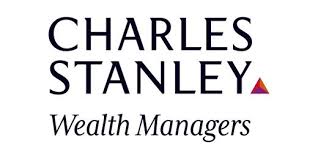Although the content(s) of the article were correct at the time of writing, the accuracy of the information contained within may no longer be current, as it may have been subject to subsequent tax, legislative or event changes. To browse more recent content, please see our Knowledge Centre.
This month:
Searching for pockets of growth
Investors despair of real returns from cash.
Technology disruption hailed as a vital trend.
Alternatives for expensive defensives advocated.
Caution urged over growth figures.
Featuring this month’s experts:
findaWEALTHMANAGER.com is a gateway to the UK’s leading wealth managers and we regularly tap their expertise for the benefit of our users.
Looking ahead to October, the poor prospects of cash and the need for real insight to find hidden value are top of the investment agenda, along with the growing influence of technological disruption and the still long-awaited rate rise from the Fed.
When will cash yield a real return for investors?
Insights from:

Mike Saunders, Associate Director at Smith & Williamson, says:
Currently, interest rates on typical bank accounts are extremely low, with many savings accounts not paying an attractive income. Whilst many accounts try to combat this by offering good introductory rates, they tend to drop significantly after a year or have inflexible notice periods. This environment has left investors searching for a return from a wider range of liquid assets.
Interest rates are expected to rise in the US and the UK is likely to follow suit soon afterwards. These changes, coupled with recent equity market volatility, may lead investors to question whether cash returns can again play an important role in their wealth management. The benign inflation that we are experiencing across Europe, not least helped by the significant fall we have seen in commodity prices, might also suggest the “real return” (i.e. return above inflation) from cash is looking more attractive for those who want a lower-risk investment. However, excluding tactically raising a cash weighting because of a client’s individual circumstances, holding a large cash balance on deposit over the medium term is not without its own risks.
Firstly, there is still a large debt burden across the developed world for both governments and individuals. This suggests that when interest rates increase, they will rise gradually and by smaller increments than previously experienced. It also imparts that central banks, despite recent rhetoric, are more than likely to wait for inflation to pick up to help erode this burden, before becoming too hawkish to ensure the economic recovery can be maintained.
Secondly, a gradual rate rise has become more probable since the election. The Conservative party remains on track to keep fiscal policy extremely tight as George Osbourne aims for a budget surplus in the next five years, which means, by proxy monetary policy, is likely to remain loose. Both of these suggest that real returns on cash are likely to remain, at best, subdued and, at worst, negative for longer-term deposit holders.

Mike Saunders
Associate Director at Smith & Williamson
Why all investors should heed technology disruption
Insights from:

Nicolas Ziegelasch, Head of Equity Research at Killik & Co, says:
Technological disruption has become an increasingly important investment theme over the past five years. What do we mean by technological disruption: well, essentially the impact that new technologies are having across almost all industries, disrupting the old way that things were done.
Technological disruption often results in the emergence of new competitors and existing players that don’t transform their businesses may well fail. To understand the impact that technological disruption can have on industries, you only have to look at the impact Amazon has had on multiple industries such as book stores, music shops and electronics retailers.
While technological disruption has been around for years, it is the rapid emergence of new technologies over the past decade that is causing such large shifts in the business landscape. For many non-technological industries, it is the emergence of SMAC (Social Networking, Mobility, Analytics and Cloud Computing), that is really changing the competitive landscape. Sometimes existing industry players can successfully adjust their business models for the technological disruption, a prime example being Netflix which went from a DVD-by-post business to the world’s leading video streaming service. But often existing players are slow to respond, creating opportunities for start-ups to create new business models, such as Uber in taxis or Airbnb in short-term property rentals.
The importance of technological disruption for investors is two-fold; not only can money be made identifying the new winners emerging, but also understanding the impact on existing players is crucial to avoiding those companies that may well be put out of business. You only have to look at what happened to Nokia after Apple released the iPhone, to understand that the negative implications are just as important as the positive. So, we spend a lot of time thinking about technological disruption, which at times may feel like science fiction – but then again we are investing for the long term.

Nicolas Ziegelasch
Head of Equity Research at Killik & Co
Savvy investors should search for pockets of growth
Insights from:

Rob Morgan, Investments & Pensions Analyst at Charles Stanley, says:
Sometimes it feels a bit like Groundhog Day in the markets at the moment. Disappointing Chinese economic data precipitates a fall in commodity prices and emerging markets, the US dollar strengthens, the Fed decides to hold off raising interest rates – and so on.
It is a pattern of activity that suggests economic stagnation, or even recession, stalks the world – an environment where companies find it difficult to grow profits because there isn’t enough end demand. Consumers want to save rather than borrow, and governments are too indebted to meaningfully stimulate the economy through investment.
What can break this cycle? We need growth to intervene, to cut through the demographic challenges of aging populations and savings gluts. But where will it be found? It is easy to become pessimistic at this point as the primary engines of global growth in recent times, emerging markets, are experiencing problems. China’s growth is slowing down, possibly rapidly, and the commodity-reliant economies of Latin America are struggling. Yet low oil and commodity prices are a good thing for many parts of the world. It is akin to a tax cut for consumers in oil-importer nations in the developed world such as the UK, and a chance for emerging economies such as India and Indonesia to cut spending on costly subsidies and redirect money to productive parts of the economy.
In investment circles, though, it seems a consensus has emerged around the stagnation scenario – and it may turn out to be correct – but there is probably little to be gained from chasing already-expensive, defensive investments. It is the pockets of growth we should be searching for: strong businesses that can defend niche areas and produce a resilient dividend stream; smaller companies with disruptive business models – firms that have been investing for the future rather than simply “optimising” their balance sheets.
Fortunately, we believe there are many such investments around, despite the doom and gloom that pervades. The world appears a more uncertain place than ever, but there are opportunities. Given the pace of change we would venture that the gap between winners and losers in the global marketplace will become starker. This will be true of both sectors and individual companies, meaning careful portfolio construction is essential going forward.

Rob Morgan
Investments & Pensions Analyst at Charles Stanley
Beware information overload when investing
Insights from:

Ben Kumar, Investment Manager at Seven Investment Management, says:
In the haste to give the world data, GDP figures are rushed out within a month of the quarter ending – leading to multiple GDP releases. Yet this first reading (or “shot in the dark”) often moves markets significantly as investors react. It seems odd to say in the modern world of big data, but there really is a genuine argument that less is more.
Collecting three-month data is difficult, and collecting meaningful three-month data even more so. One-off events are magnified in importance thanks to the short frame of reference. Take the London tube strike, where access to the capital was incredibly difficult for over 24 hours in August. That missed summer shopping day will have hurt retailers – but over the course of a year is going to be lost in the noise. However, when viewed on a quarterly basis (i.e. 60 working days), that one poor day represents nearly 2% of the data collected – more than enough to give a negative skew to that period’s numbers.
Issuing a statement every three months is an expensive and complicated undertaking that can sometimes be harmful for the company involved. Some market participants clearly sympathise with this. Increasingly when public companies are taken private, avoiding short-termism is cited as a key reason – Michael Dell cited this reason when he did so in 2013.
If companies find it expensive and difficult to collect data on their own business, how much more difficult must it be for government employees to come up with a quarterly GDP figure? At least as a company, there is cash in the bank, products in the warehouse and receipts in the till. The same cannot be said for a nation.
Let’s use an often quoted number by expert opinion to demonstrate: GDP growth. In the haste to give the world data, GDP figures are rushed out within a month of the quarter ending, which leads to multiple GDP releases – the initial estimate, and then two or more revisions.
In the UK, the first estimate is made with less than 40% of the information used in the final reading. To draw a parallel – that’s like a bookmaker paying out on a football match after the 36th minute, just assuming the score will stay the same. In addition, the final figure is on average 1% different to the initial one. In a world where 2% GDP growth is considered impressive, that 1% margin of error is incredibly high. Given that statistical analysis depends largely on the quality of the data, this focus on speed seems slightly contrary to me.
Big data is all very well, but there has to be some information content – otherwise, we’re producing static, rather than statistics.

Ben Kumar
Investment Manager at Seven Investment Management
Investors: Expect the best; prepare for the worst…
Insights from:

Artur Baluszynski, Head of Research at Henderson Rowe, says:
The market gyrations of the past month come against a background of strong US job creation, an upward revision of annualised US GDP to 3.9%, and Janet Yellen (Chair of the Federal Reserve) indicating that when she raises rates she will do so slowly. Pretty good news, you would have thought.
Since the market was focused like a laser on the ‘Will she, won’t she’ FOMC rate rise question, it is ironic that continued stimulus in the form of a delay scared it more than the expected 0.5% rise. The reason: Yellen’s confirmation that the pause was caused by China’s growth slowdown. This is surprising, as the widely known Li Kequiang index of changes in bank lending, rail freight and electricity shows growth is now only 3%. (This index is named after a former Chinese premier, who said he preferred these measures to official GDP numbers.)
Will the US be knocked off track by this? The US has almost no Chinese exports. Currency is the issue, as capital may pour into a strong dollar out of Asia, making US exports in general and Yellen’s inflation target harder to achieve.
The US needs to bite the bullet while the going is good. The eurozone is building momentum, with 1.3% annualised growth in GDP last quarter and a pick-up in credit growth indicating better than expected labour conditions. The UK has seen its growth numbers strongly revised upwards by the ONS, as well as rising business investment, confidence and at long last productivity too. If Yellen and Mark Carney do not raise rates now, they will be short of ammo to fight the next recession.
Markets have risen without a substantial correction since the Euro crisis of 2011, sailing through red flags in Russia, commodities, Greece and China, and it looks as if this sell-off has acted as a pressure valve releasing accumulated worries. We are not expecting a recession in the developed world. The US Yield Curve is still steep and lower oil prices should find their way to consumer pockets. Not much has really changed in the past month with respect to fundamentals. The outlook for developed world growth and earnings is still positive. China’s economy has been weaker than officially expected, but most investors knew that already. Nevertheless, such big moves in a short period of time make everyone nervous and need to be taken seriously. Reduced market maker inventory hurts liquidity when markets are under stress, and there are large amounts of sovereign and other debt around. The troubles of VW and Glencore have not helped sentiment, with rumours of banking exposure in commodities and more auto scandals in Europe’s industrial engine room.
Tips for your investment, being conservative investors we expect the best and prepare for the worst, making sure our clients’ asset allocations meet their needs and risk profiles. For our more conservative clients we hold a mix of developed world equities, index-linked bonds and a little cash to protect their purchasing power over the long term and buy bargains short term. For our more aggressive clients we have a GDP weighted exposure to the developed world and are still underweight emerging markets and commodity markets. The latter two should offer attractive returns in the long run and if we see capitulation may start to build a meaningful position. But remember, these days markets turn on a sixpence and when they recover, go up hard.

Artur Baluszynski
Head of Research at Henderson Rowe
Important information
The investment strategy explanations contained in this piece are for informational purposes only, represent the views of individual institutions, and are not intended in any way as financial or investment advice. Any comment on specific securities should not be interpreted as investment research or advice, solicitation or recommendations to buy or sell a particular security.
We always advise consultation with a professional before making any investment decisions.
Always remember that investing involves risk and the value of investments may fall as well as rise. Past performance should not be seen as a guarantee of future returns.
